9 Common Types of Ants in Florida
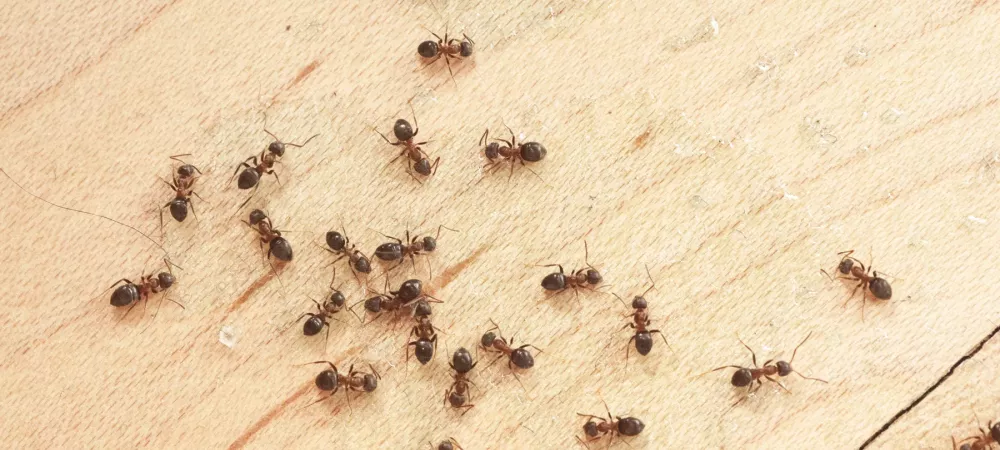
Dozens of different species of ants call Florida home. However, only a few species are known to invade homes. The ants that we see in our homes are attracted to different things depending on the species, but it’s mostly between food, moisture, and shelter.
Knowing how to identify different types of ants can be the key to keeping them out of your home. Here are the nine most common types of ants found in Florida.

Acrobat Ants
Acrobat ants get their name from their defensive posture. When threatened, the acrobat ant lifts its stinger in the air like a scorpion. Acrobat ants rarely use their sting, and the pain is mild when they do. But worker ants are aggressive and will bite when threatened. They also give off a foul odor when alarmed. Acrobat ants are often confused with Carpenter ants because of their similar appearance. But unlike carpenter ants, they are most active during the daytime.
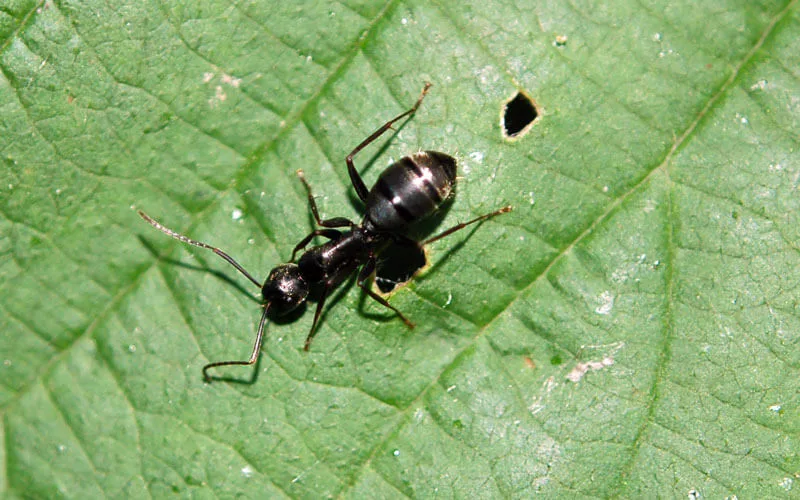
Argentine Ants
Argentine ants are light to very dark brown and measure 2.2 to 2.8 millimeters. These ants do not bite or sting but can be a serious nuisance in the yard. Argentine ants are rapid breeders and can cooperate with neighboring colonies to create super-colonies that can number hundreds of thousands of workers.
As they search for food, they leave pheromone trails wherever they go so that they never search the same place twice. They are attracted to decay and waste and can spread bacteria wherever they go. Another way these pests can destroy your yard is by protecting honeydew-secreting garden pests such as aphids, scales, and mealybugs from natural predators.
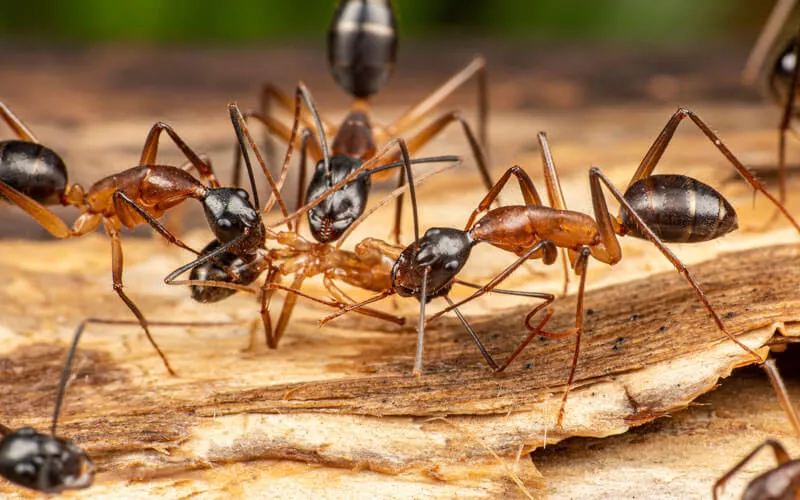
Carpenter Ants
Unlike fire ants, carpenter ants do not bite aggressively but make up for it by causing extensive damage. Carpenter ants, much like termites, prefer to carve their nests out of wet and decaying wooden structures. In their natural habitat, carpenter ants will build their galleries in old rotten trees or under fallen logs. Inside your home, they can cause damage to wooden structures such as floorboards, drywall, and wooden support beams.
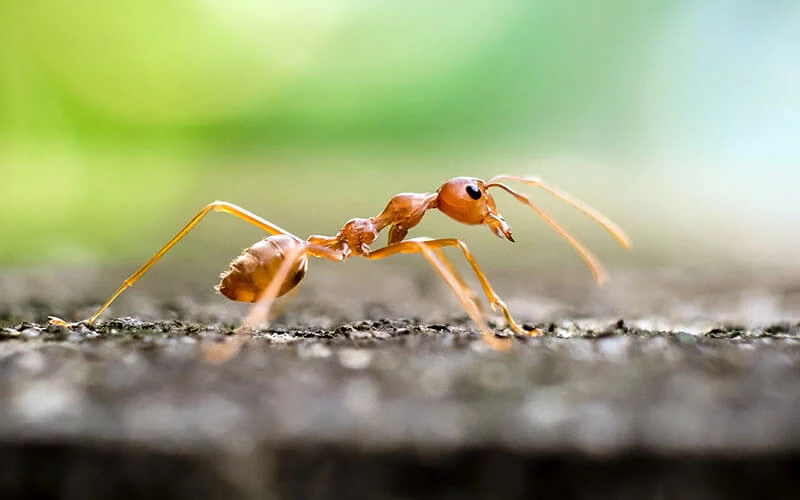
Fire Ants
Fire ants are one of the most common and most dreaded species of ant found in Florida. The American South has been inundated with these aggressive ants since the 1930s, when they were imported from South America. Fire ants are recognized nationwide for their burning stings and red warning appearance. These pests are not known to establish colonies indoors, but they can be brought inside via potted plants.
You and your family can be at risk when fire ants establish colonies in your yard. Plants and grass can be affected by fire ant colonies. The fire ants are a very aggressive species, and they will attack any threat that disturbs the nest, including children and pets.
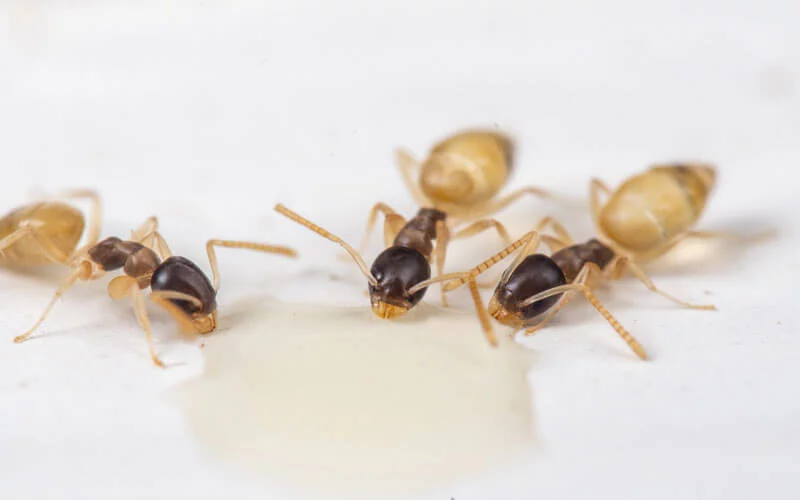
Ghost Ants
Measuring 1.3 to 1.5 millimeters, the ghost ant is one of the smallest species of ant you will encounter. Its head and thorax are dark, while the rest of the body is almost translucent.
Ghost ants are a tropical species and are a very common pest in Florida households. They do not sting but will excrete a foul coconut smell when crushed. Ghost ants love humidity and tend to nest in rotting trees, under bark, under leaves, and in plant cavities. When they get into your home, they can build their colonies almost anywhere they can fit, including:
- Potted plants
- Behind baseboards
- Inside shower curtain rods
- Around windows
- Cracks in wooden floors
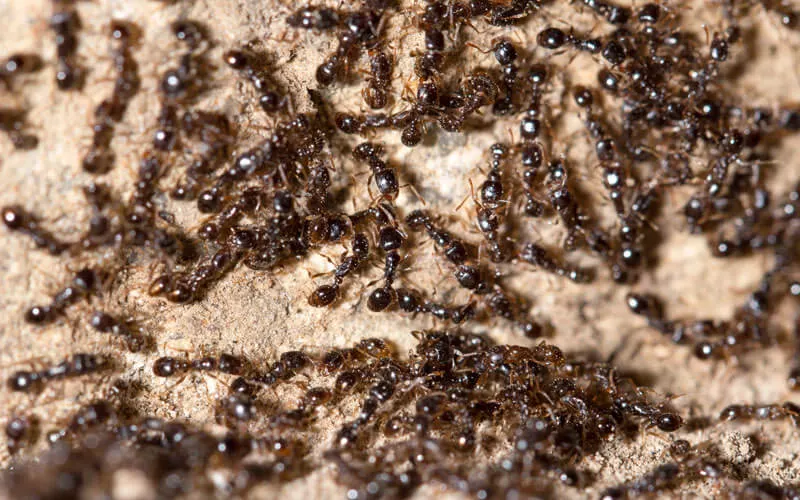
Little Black Ants
Another common species is the little black ant, which, as the name indicates, is a type of small, black-colored ant. These small ants love greasy foods, oil, meats, fruits and vegetables, and sweets. They can invade your home through tiny cracks around windows and under doors. They are usually found foraging for food in the kitchen. Additionally, they consume honeydew, insects, and plant secretions. Little black ants can be found nesting in your yard under:
- Rocks
- Paving stones
- Potted plants
- Rotting logs
- Piles of lumber
Odorous House Ants
Also known as sugar ant, stink ant, or coconut ant, the odorous house ants are one of the most challenging Florida ants to control and are named after the foul odor they emit when crushed. These ants cooperate with other ants, allowing them to dominate large areas of land quickly. They are colloquially referred to as sugar ants but they prefer to build their colonies outdoors with easy access to the sweet-tasting honeydew produced by aphids and mealybugs. They tend to invade homes in rainy weather or when honeydew is scarce.
Odorous house ants can contaminate food because of their foraging activity. The workers and scouts leave behind invisible pheromone trails from the food source to their nest, which allows for more ants to invade. A pest control expert should be contacted if you suspect an odorous house ant infestation.
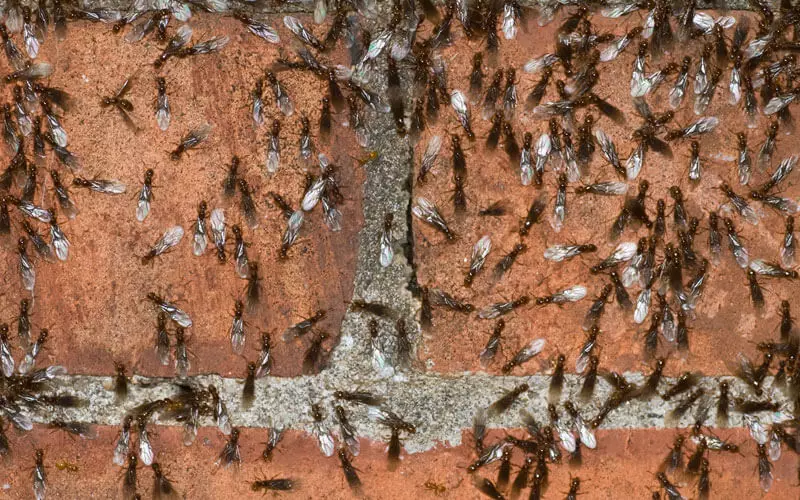
Pavement Ants
As you can probably guess, Pavement ants build their colonies in cracks in sidewalks, driveways, and foundations. They have the capability to bite but rarely ever do. Pavement ants have a large appetite that includes:
- Meat
- Grease
- Dead insects
- Seeds
- Sweets
- Honeydew
Swarms of pavement ants appear in the spring but can continue if the nest is inside the home. The swarmers are sometimes confused with termites because of their wings, and can be a nuisance in residential and commercial buildings.
Rover Ants
Another small species, the rover ant, can range from 1.5 to 2 millimeters. These pests can be a nuisance when they swarm and are often confused for termites. But unlike termites, they don’t eat wood. Rover ants are prevalent between May and August when swarmers emerge to mate and start new colonies. They prefer areas with lots of moisture or decay. They will move indoors during times of drought to look for water. Fixing any leaks or water damage can reduce the chances of an infestation.
Getting Rid of Ants
Getting rid of ants can be tricky, so the best approach is to prevent them from getting in to begin with. You can prevent them from getting into your house by sealing cracks and crevices in exterior walls with caulk, ensuring firewood is stored at least 20 feet away from your foundation, and keeping trees and shrubs well-trimmed to prevent an infestation.
If you find ants in your kitchen, it's important to clean up the area well and seal any food in airtight containers. Make sure to sweep and vacuum often and clean up any spills as soon as they happen. You might also consider putting up a few ant traps, which can be purchased at a local hardware store.
If you are dealing with a larger or very persistent ant infestation, you should consider working with a licensed pest professional to come up with a preventative ant management plan.
Call An Ant Control Expert
Trying to get rid of ants in your home or yard can be an uphill battle. With colonies numbering in the hundreds of thousands, it might be impossible to completely eliminate a colony entirely. An experienced pest control technician can not only help you identify the type of ant you are dealing with, but also help you create a targeted treatment.
When you have an ant problem in Central Florida, call Deans Services, your Clermont pest control experts. We have the skills and expertise to turn your yard into the yard of your dreams. Call us today at 352-787-5300 or contact us online.
